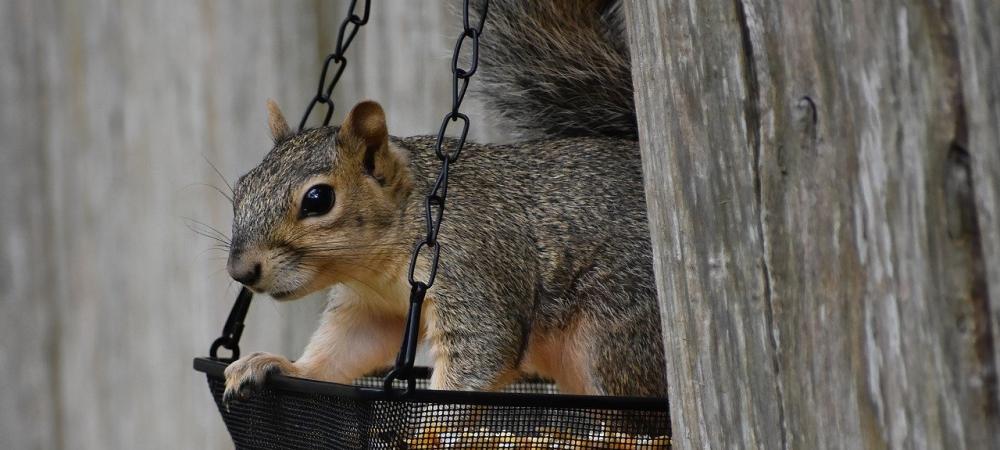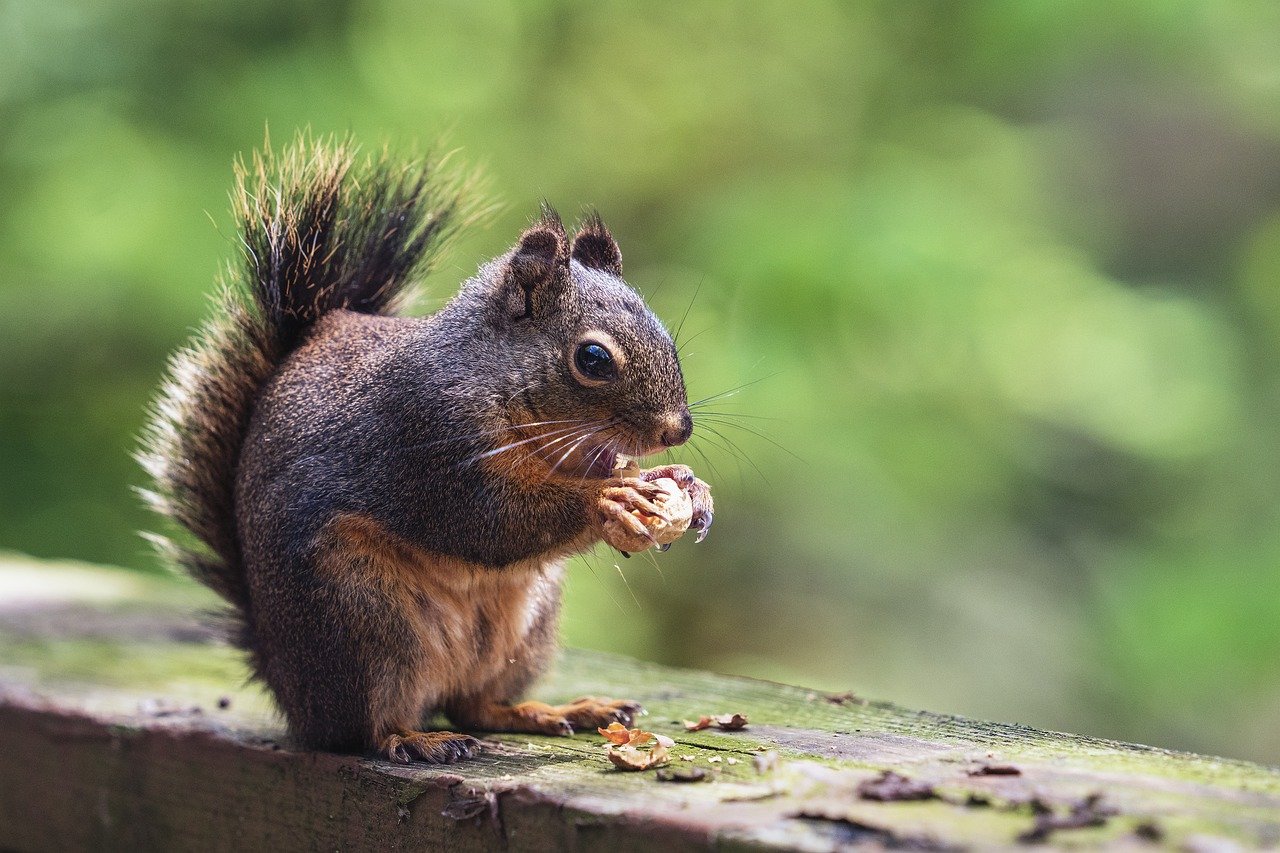Getting Rid of Squirrels in Your Attic

Squirrels may be adorable little creatures when seen darting around in your yard or munching on acorns, but when they invade your attic, they can quickly become a nuisance. For homeowners in Virginia and Maryland, understanding the signs of a squirrel infestation, the potential damage they can cause, and how to address the problem is crucial.
Why Are There Squirrels in My Attic?
Squirrels typically seek shelter in attics to escape predators and the elements. Your attic provides warmth, safety, and ample nesting material, making it an attractive spot for these critters, especially during the colder months. Virginia and Maryland are home to both Eastern gray squirrels and fox squirrels, which may be searching for cozy places to nest.
Signs of A Squirrel Infestation
Recognizing the signs of a squirrel infestation early can save you from extensive damage and costly repairs. Here are some common indicators:
1. Noises in the Attic
One of the most noticeable signs of a squirrel infestation is the sounds they make. You may hear:
- Scratching and Scrambling: Squirrels are active during the early morning and late afternoon. If you hear scratching, scurrying, or thumping noises coming from your attic, it could indicate that squirrels are moving around.
- Chirping and Chattering: Squirrels communicate with each other through chirps and chatters. If you hear these vocalizations, it may suggest that they are nesting nearby.
2. Droppings
Squirrel droppings resemble small, dark pellets, typically about 1/4 to 1/2 inch long. Finding these droppings in your attic, near entry points, or around your home can indicate a squirrel presence.
3. Gnaw Marks and Chewing Damage
Squirrels have strong teeth that they use to gnaw on wood, insulation, and even electrical wiring. Look for:
- Chewed Wood: Inspect beams, rafters, and any wooden structures in your attic for signs of gnawing.
- Damaged Insulation: Squirrels may shred insulation material for nesting, leaving noticeable holes or clumps.
- Wires: Check for frayed electrical wires, which can pose a fire hazard.
4. Nesting Materials
If you find shredded materials, such as insulation, fabric, or paper, it may indicate that squirrels are building nests in your attic. They often collect these items to create a warm, comfortable space for raising their young.
5. Entry Points
Inspect your home for potential entry points. Squirrels can squeeze through surprisingly small openings. Look for:
- Holes or Gaps: Check the roof, vents, eaves, and soffits for any holes that could serve as entry points.
- Damage to Vents: Make sure that vents are intact and properly covered to prevent squirrels from entering.
6. Tracks and Footprints
If you can safely access your attic, look for tracks or footprints. Squirrel tracks may resemble small handprints with four toes, indicating their presence.
7. Increased Activity During Mating Season
If you notice increased noises or signs of activity during late winter or early spring, it may be due to mating behavior. Female squirrels may seek out warm, safe places to give birth and raise their young.
Potential Damage Caused by Squirrels
Squirrels may seem harmless, but when they invade your attic, they can cause significant damage to your home:
- Chewed Electrical Wires: Squirrels have sharp teeth and tend to gnaw on wires, increasing the risk of electrical fires.
- Insulation Damage: They tear up insulation to build nests, reducing your home’s energy efficiency and leading to higher utility bills.
- Structural Damage: Squirrels chew on wood, vents, and roofing materials, which can weaken the structure and create new entry points for other pests.
- Contamination: Their droppings and urine can spread diseases and create unpleasant odors, requiring thorough cleanup.
Addressing a squirrel infestation quickly can help you avoid costly repairs and potential hazards.

How To Get Rid of Squirrels in the Attic
Squirrels in your attic can cause a variety of issues, from chewing through electrical wires to creating nests that damage insulation. If you're dealing with a squirrel infestation, it's important to act quickly to prevent further damage. Here’s a step-by-step guide for safely and effectively getting rid of squirrels in your attic.
1. Inspect Your Home for Entry Points
Before removing squirrels, you need to find out how they’re getting in. Inspect your home for any potential entry points, including:
- Holes in the roof, vents, and soffits
- Gaps around chimneys or attic vents
- Damaged or loose shingles
Squirrels can squeeze through small openings, so seal any gaps larger than 2 inches with metal mesh or hardware cloth. Make sure to leave one main entry point open temporarily for the squirrels to exit.
2. Use a One-Way Door
Once you’ve identified the entry points, consider installing a one-way exclusion door. These doors allow squirrels to leave the attic but prevent them from getting back in.
- Installation: Place the one-way door over the main entry point that the squirrels are using.
- Monitor: Keep an eye on the activity for a few days to ensure all squirrels have left the attic.
Once you’re certain they’ve vacated, seal the remaining entry point to prevent future access.
3. Humane Trapping
If exclusion doors are not feasible, humane traps can help remove squirrels from your attic:
- Choose a Live Trap: Use a cage trap baited with peanut butter, sunflower seeds, or nuts to lure the squirrels.
- Place Traps in Active Areas: Set the trap near entry points or where you’ve noticed squirrel activity.
- Release Far Away: Once caught, release the squirrels at least 5–10 miles away from your home to ensure they don’t return.
It's important to check local wildlife regulations in Virginia and Maryland, as there may be specific rules regarding squirrel trapping and relocation.
4. Create Unpleasant Conditions
Squirrels seek a quiet, comfortable space to nest. You can make your attic less appealing by:
- Using Strong Scents: Soak cotton balls in apple cider vinegar or peppermint oil and place them in areas where squirrels are active. The strong smell can help deter them.
- Loud Noises: Play a loud radio or use ultrasonic noise devices to create an environment that encourages squirrels to leave.
These deterrents can be effective in making your attic an uncomfortable place for squirrels, pushing them to leave on their own.
5. Clean Up Afterward
After the squirrels are gone, it’s essential to thoroughly clean your attic:
- Remove Nests: Get rid of any nests and nesting materials squirrels may have left behind.
- Disinfect: Squirrel droppings and urine can carry diseases, so use a disinfectant to clean the area and neutralize odors.
Additionally, check for any damage they may have caused to insulation, wiring, or wood and repair it promptly.
6. Prevent Future Squirrel Infestations
To keep squirrels from returning, take these preventive steps:
- Seal All Entry Points: Ensure every gap, hole, or vent is properly covered and secured with heavy-duty materials.
- Trim Trees: Keep tree branches trimmed back from your roofline to limit access. Squirrels are excellent climbers and can leap from branches to roofs. Cut back tree branches that are within 6-8 feet of your roof.
- Install Squirrel Guards: Use guards on vents, chimneys, and pipes to block squirrels from entering.
- Remove Food Sources: Secure trash cans, store pet food indoors, and avoid leaving birdseed out for extended periods, as these can attract squirrels to your property.
- Install Squirrel-Proofing Devices: Consider installing squirrel guards on bird feeders and using baffles to deter them from accessing food sources.
When to Call a Professional
If the infestation is severe or if you're uncomfortable handling it yourself, it's best to call your wildlife control experts at Century Termite & Pest Control. Our team of professionals will have the knowledge and tools to remove the squirrels safely and humanely while ensuring that your home is properly sealed to prevent re-entry. Contact our team to learn more!
Are Squirrels Dangerous?
While squirrels generally avoid humans and aren't aggressive, they can pose several risks when they invade your attic:
- Health Risks: Squirrels can carry parasites such as fleas, ticks, and mites, as well as diseases like leptospirosis and salmonella. Their droppings and urine can also create unsanitary conditions, potentially spreading harmful bacteria.
- Fire Hazard: Squirrels are notorious for chewing on electrical wires. This behavior can strip the wire insulation, increasing the risk of short circuits and electrical fires in your home.
- Physical Damage: Squirrels' constant gnawing can cause significant damage to wood, insulation, and ductwork. Over time, this can lead to costly repairs and weaken the structure of your home.
While squirrels aren’t dangerous in the sense of physical attacks, the hazards they create in your attic—ranging from fire risks to potential health issues—make them a serious concern if left unchecked.
Do Squirrels Leave Droppings in the Attic?
Yes, squirrels do leave droppings in the attic. Their droppings are small, dark pellets, similar in size to a raisin. The presence of droppings is a clear sign of squirrel activity, and their waste can create health hazards over time due to potential disease and odor buildup.
How Long Will Squirrels Stay in the Attic?
Squirrels will stay in your attic as long as it's a safe, warm, and secure place for them to live. Typically, they seek attics for nesting, especially during late winter and early spring when they are raising young. If not removed, squirrels can stay for months, returning season after season. To prevent this, it's important to remove them and seal entry points as soon as possible.
How To Tell If You Have Squirrels vs. Rodents in Your Attic?
There are several ways to differentiate between squirrels and rodents in your attic:
- Noises: Squirrels are diurnal, so you'll hear them moving around mostly during daylight hours, especially early morning and late afternoon. Rodents, such as rats and mice, are nocturnal, so they're more active at night.
- Droppings: Squirrel droppings are larger and more elongated than rodent droppings. Rat and mouse droppings are smaller and more consistent in size.
- Gnaw Marks: Squirrels tend to chew on larger structures like wood, vents, and roof material, while rodents are more likely to gnaw on smaller items like wires and food packages.
- Entry Points: Squirrels often create larger holes in roofs or eaves, while rodents squeeze through very small cracks and crevices.
If you are looking for ways to get rid of rodents in your attic, check out the most common types of rodent traps.
What Attracts Squirrels to My Attic?
Squirrels are drawn to attics because they offer warmth, shelter, and safety, particularly during colder months or breeding seasons. They seek attics for nesting, especially if there are easy entry points such as damaged vents, roof gaps, or loose soffits. Attics provide a quiet, secluded space where squirrels can store food and raise their young, safe from predators.
What is the Best Time to Remove Squirrels from the Attic?
The best time to remove squirrels is before or after the breeding season, which typically occurs in late winter and early spring. If you remove squirrels during this time, there’s a chance you might leave behind young squirrels that are unable to survive on their own. Ideally, removal should be done when there are no baby squirrels present, or you should ensure that all squirrels, including the young, are safely relocated.
